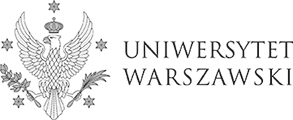Informacje o publikacji
| Wydanie: | 1 |
| Miejsce i rok wydania: | Warszawa 2021 |
| Język publikacji: | angielski |
| ISBN/ISSN: | 978-83-235-4999-4 |
| EAN: | 9788323549994 |
| Liczba stron: | 250 |
| Wielkość pliku: | 4,1 MB |
| Typ publikacji: | Praca naukowa , Open access |
| DOI: | https://doi.org/10.31338/uw.9788323549918 |
The idea of looking at the architects operating within the cultural framework of the Habsburg Empire, embedded in this book, stems from our previous research. It has its roots in the research on Slavic peripheral narratives, conducted by the Research Group on the Slavic Cultures in the Habsburg Monarchy (http://uwhabsburgstudies.uw.edu.pl/), which has operated since 2011 at the Institute of Western and Southern Slavic Studies of the University of Warsaw. We studied the issue of peripheral attitudes towards both national narratives, created after 1861 by the Slovak, Czech and Croatian elites, and the imperial project imposed by Vienna and Budapest. Faithful to the microlevel approach, we looked at figures, spaces and social phenomena that do not fit into the stereotypical view of national historiography.
Anna Kobylińska, Maciej Falski
Keywords: architects, Habsburg Monarchy, social elite, history of architecture.
*********
Publikacja na licencji Creative Commons Uznanie autorstwa 3.0 PL (CC BY 3.0 PL) (pełna treść wzorca dostępna pod adresem: http://creativecommons.org/licenses/by/3.0/pl/legalcode).
Anna Kobylińska, Maciej Falski
Keywords: architects, Habsburg Monarchy, social elite, history of architecture.
*********
Publikacja na licencji Creative Commons Uznanie autorstwa 3.0 PL (CC BY 3.0 PL) (pełna treść wzorca dostępna pod adresem: http://creativecommons.org/licenses/by/3.0/pl/legalcode).
The value of the book is in shedding light on quite many underrated or allegedly well-known persons, places, and buildings within a clear and persuasive theoretical framework. Original in its comparative perspective, as well as in its chronology (trespassing the demise of the Empire usually seen as a clear-cut caesura), the volume offers well-grounded hints in the interpretation of architecture. Written by specialists who convincingly provide synthetic information, it can be recommended to a wider audience interested in cultural phenomena. Going beyond disciplinary boundaries, the chapters sharpen the eyes of the reader and provide guidance in reading the specificity of places. Well-known monuments seem more complex and appealing. Provincial towns appear not as belated environments but receptacles of forgotten layers of modernity.
Prof. Daniel Baric, Sorbonne Université, Paris
Prof. Daniel Baric, Sorbonne Université, Paris
Anna Kobylińska, https://orcid.org/0000-0001-6296-0435
Architects from the periphery: Ján Nepomuk Bobula and Blažej Félix Bulla. Genealogy of localness
https://doi.org/10.31338/uw.9788323549918.pp.75-102
Aleksander Łupienko, https://orcid.org/0000-0002-7568-7455
Architects in Galicia and the city. The question of history and modernity before World War I
https://doi.org/10.31338/uw.9788323549918.pp.179-192
Maciej Falski, https://orcid.org/0000-0002-5610-5608
Architects of a provincial town
https://doi.org/10.31338/uw.9788323549918.pp.119-138
Dorota Sosnowska
Beyond the limits – eccentric H.
https://doi.org/10.31338/uw.9788323549918.pp.211-236
Dragan Damjanović, https://orcid.org/0000-0003-2589-8075
Gothic Revival at the borders of Catholic Christianity: State politics, patrons and architects in 19th-century Croatian architecture
https://doi.org/10.31338/uw.9788323549918.pp.37-74
Magdalena Bystrzak, https://orcid.org/0000-0002-4485-1419
Languages of interwar progressivism: Friedrich Weinwurm in Bratislava
https://doi.org/10.31338/uw.9788323549918.pp.193-210
Michał Burdziński
Poets who moved the air: Stanisław Witkiewicz – Dušan Samuel Jurkovič
https://doi.org/10.31338/uw.9788323549918.pp.153-178
Anna Kobylińska, https://orcid.org/0000-0001-6296-0435
Maciej Falski, https://orcid.org/0000-0002-5610-5608
Seismographs of culture. Prolegomena
https://doi.org/10.31338/uw.9788323549918.pp.9-36
Jasenka Kranjčević, https://orcid.org/0000-0002-5594-9868
Tourism architecture by Czech architects on the Croatian Adriatic coast during the Austro-Hungarian Monarchy
https://doi.org/10.31338/uw.9788323549918.pp.139-152
Dominika Kaniecka, https://orcid.org/0000-0003-1754-8171
Zagreb after the 1880 earthquake – The revived city and its architect
https://doi.org/10.31338/uw.9788323549918.pp.103-118
Architects from the periphery: Ján Nepomuk Bobula and Blažej Félix Bulla. Genealogy of localness
https://doi.org/10.31338/uw.9788323549918.pp.75-102
Aleksander Łupienko, https://orcid.org/0000-0002-7568-7455
Architects in Galicia and the city. The question of history and modernity before World War I
https://doi.org/10.31338/uw.9788323549918.pp.179-192
Maciej Falski, https://orcid.org/0000-0002-5610-5608
Architects of a provincial town
https://doi.org/10.31338/uw.9788323549918.pp.119-138
Dorota Sosnowska
Beyond the limits – eccentric H.
https://doi.org/10.31338/uw.9788323549918.pp.211-236
Dragan Damjanović, https://orcid.org/0000-0003-2589-8075
Gothic Revival at the borders of Catholic Christianity: State politics, patrons and architects in 19th-century Croatian architecture
https://doi.org/10.31338/uw.9788323549918.pp.37-74
Magdalena Bystrzak, https://orcid.org/0000-0002-4485-1419
Languages of interwar progressivism: Friedrich Weinwurm in Bratislava
https://doi.org/10.31338/uw.9788323549918.pp.193-210
Michał Burdziński
Poets who moved the air: Stanisław Witkiewicz – Dušan Samuel Jurkovič
https://doi.org/10.31338/uw.9788323549918.pp.153-178
Anna Kobylińska, https://orcid.org/0000-0001-6296-0435
Maciej Falski, https://orcid.org/0000-0002-5610-5608
Seismographs of culture. Prolegomena
https://doi.org/10.31338/uw.9788323549918.pp.9-36
Jasenka Kranjčević, https://orcid.org/0000-0002-5594-9868
Tourism architecture by Czech architects on the Croatian Adriatic coast during the Austro-Hungarian Monarchy
https://doi.org/10.31338/uw.9788323549918.pp.139-152
Dominika Kaniecka, https://orcid.org/0000-0003-1754-8171
Zagreb after the 1880 earthquake – The revived city and its architect
https://doi.org/10.31338/uw.9788323549918.pp.103-118

Update Required
To play the media you will need to either update your browser to a recent version or update your Flash plugin.























